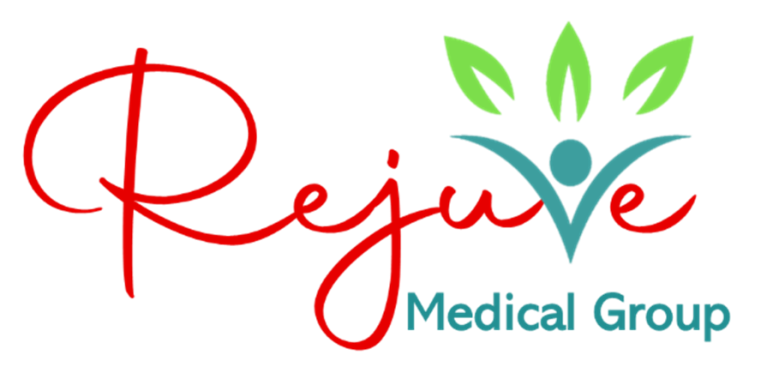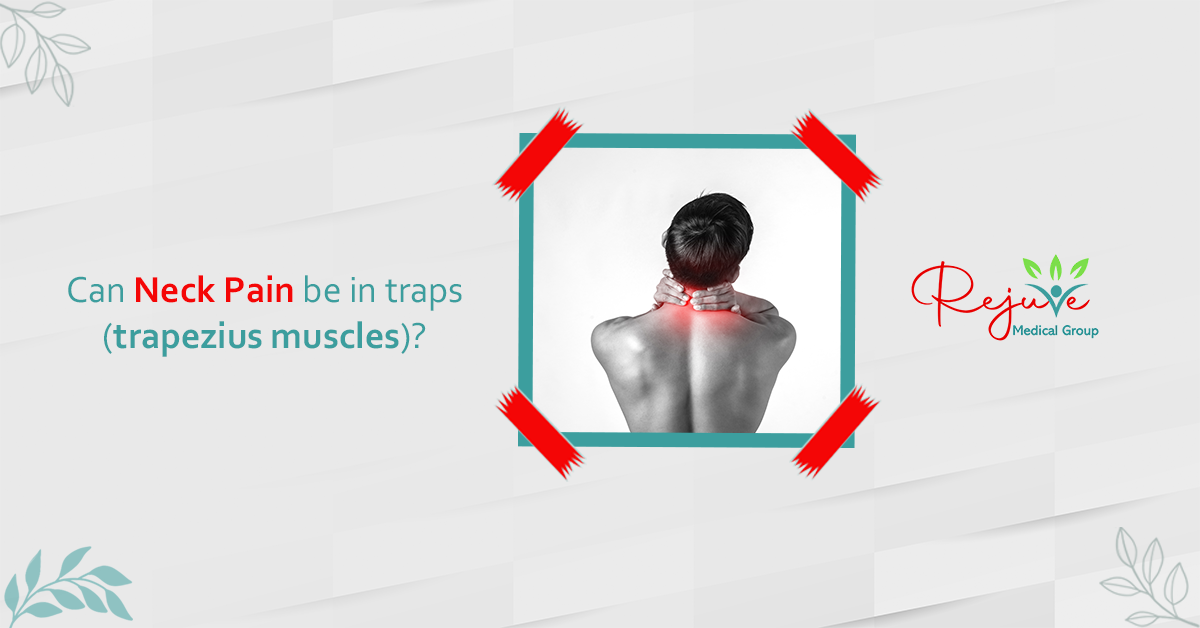Can Neck Pain Be in the Trapezius Muscles?
Have you ever experienced neck pain and wondered where it was coming from? While neck and spine issues are common culprits, your trapezius muscles, or “traps,” could be the source of your discomfort. These muscles play a vital role in neck and shoulder movement, often contributing to sensations of pain. So, can neck pain be in the traps? Absolutely! Let’s explore why this happens, how it feels, and ways to find relief.
At RejuVe Medical Group, we specialize in helping patients move freely and live without pain. Our team provides personalized care for neck and trapezius pain. Contact us today for expert guidance.
What Are the Trapezius Muscles?
The trapezius muscles are large, triangular muscles extending from the base of your spine to your shoulders and up to the base of your skull. Their trapezoid-like shape is why they are often referred to as “traps.”
These muscles are responsible for several critical movements, including:
- Moving your neck.
- Shrugging your shoulders.
- Lifting your arms.
- Stabilizing your head.
When overworked or strained, your traps can develop painful knots, leading to neck discomfort and restricted shoulder mobility.
Why Can Neck Pain Be in Traps?
Your traps bear a significant load daily, and when they’re stressed or strained, they can refer pain to the neck, shoulders, and even the head. Here are some common reasons why traps might be the source of neck pain:
-
Poor Posture
Slouching or spending long hours looking down at your phone can place undue strain on the traps, leading to tightness and discomfort over time.
-
Stress and Tension
Stress doesn’t just affect your mind; it impacts your body too. When you’re stressed, your traps can become tight, causing your shoulders to rise and increasing the strain on your neck.
-
Overuse or Overactive Traps
Repetitive activities like typing or carrying heavy items can overwork the traps, leading to muscle tension and pain in the neck and shoulders.
-
Injuries
Injuries such as a fall, muscle strain, or lifting something heavy can cause knots or imbalances in the traps, resulting in neck stiffness and pain.
Signs of Trapezius-Related Neck Pain
If you’re wondering whether your neck pain originates in the traps, look out for these signs:
- Trapezius Knot: A small, tight bump in the muscle that’s painful to touch.
- Trapezius Muscle Headache: Pain starting in the traps and radiating to the back of the head.
- Stiff Neck and Shoulders: Discomfort when turning your neck or raising your arms.
- Constantly Tense Shoulders: Persistent tension in the shoulders, even when you’re not stressed.
Common Causes of Trapezius Problems
Several factors can lead to issues in the traps, including:
-
Trigger Points
Tight, sore knots in the traps can cause localized pain and refer discomfort to the neck and shoulders.
-
Overactive Trapezius
Overuse from repetitive activities or heavy lifting can lead to tightness, inflammation, and pain.
-
Trapezitis
This inflammation of the traps can cause swelling, tenderness, and either dull or sharp pain in the neck and shoulders.
-
Trapezius Imbalance
When one trap muscle is tighter or stronger than the other, it can cause uneven shoulders, neck strain, and pain.
How Can Neck Pain in the Traps Cause Headaches?
Tight or overworked traps can cause trapezius muscle headaches, which often feel like a band of tension around the head. This occurs when stress in the traps radiates upward to the base of the skull. Poor posture, stress, and tight shoulders are common triggers for these headaches.
How to Relieve Pain in the Traps
Managing trapezius-related neck pain is possible with these effective strategies:
-
Gentle Stretches
- Neck Rolls: Slowly roll your head in a circular motion to relax the muscles.
- Shoulder Rolls: Lift and roll your shoulders backward to release tension.
-
Massage Therapy
Massage can target knots or trigger points in the traps, easing discomfort. Use your hands or tools like foam rollers for relief.
-
Improve Your Posture
Maintain a straight back, relaxed shoulders, and an elevated head while sitting or standing to reduce strain on the traps.
-
Heat or Ice Therapy
- Use heat packs to relax tight muscles.
- Apply ice packs to reduce inflammation and soothe pain.
-
Stay Active
Light activities like yoga or walking can strengthen the traps and reduce tension.
-
Seek Professional Help
If home remedies don’t work, consult a physiotherapist for exercises to address muscle imbalances or weaknesses.
Recovery Time for Trapezius Pain
Recovery depends on the severity of the injury. Mild strains often heal in a few days with rest, while severe cases may take weeks. If symptoms persist beyond two weeks, seek medical attention.
Preventing Trapezius and Neck Pain
Keep your traps healthy and pain-free with these tips:
- Take Breaks: Stretch every 30 minutes during prolonged sitting.
- Avoid Heavy Bags: Distribute weight evenly across both shoulders.
- Relax Your Shoulders: Lower and relax your shoulders to reduce tension.
- Strengthen Your Traps: Gentle shoulder shrugs can help maintain strength.
When to See a Doctor
If you experience persistent pain, sharp sensations, or limited mobility, consult a doctor. Treatment options may include physical therapy, medication, or diagnostic tests.
Conclusion: Can Neck Pain Be in the Traps?
Yes, neck pain can originate in the trapezius muscles. These crucial muscles support your neck and shoulders, and when strained or overused, they can cause discomfort in the neck, shoulders, and even the head.
By understanding the causes and treatments for trapezius pain, you can take steps to prevent and manage it effectively. Let’s care for your traps so they can continue to support you!
FAQs
What causes pain in the trapezius muscles?
Poor posture, stress, overuse, injury, inflammation, and imbalances can all contribute to trapezius pain.
Can trapezius pain cause headaches?
Yes, trapezius pain can trigger headaches that start in the shoulders or neck and radiate to the head.




No comment